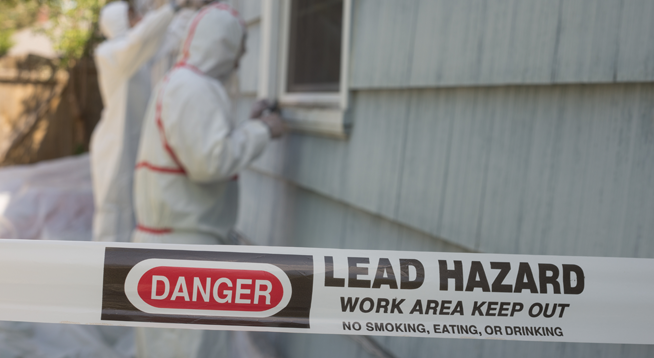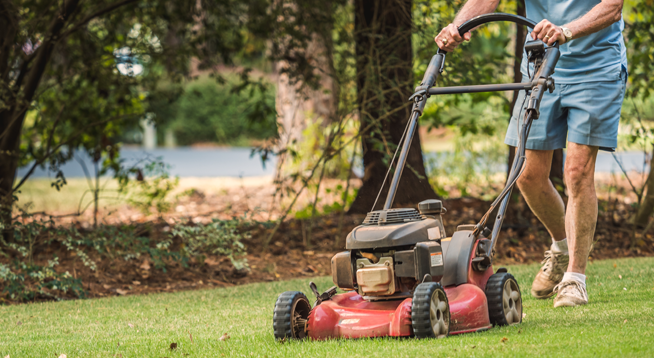
By Ken Calverley and Chuck Breidenstein
DETROIT, November 16, 2022 ~ Everyone is aware of the recent issues regarding water contamination by lead pipes, but few maintain an awareness of the ongoing issues with lead paint.
It is estimated that 87 percent of the homes built prior to 1940 contain lead-based paint while 67% of homes built from 1940-1959 and 24 percent of homes built from 1960-1977 also contain the once-popular product.
This accounts for about 64 million dwellings.
The addition of lead in paint improved many features of the product including resistance to environmental issues and durability. When properly maintained and managed, this paint poses little threat to building occupants.
The unfortunate reality over time has been the discovery that lead flakes, chips and dust can be responsible for some potentially devastating health issues for both children and adults.
PODCAST:
November 13, 2022 ~ The Inside Outside Guys Special: Atlas Home Improvement
(CONTINUED) Children are at risk in homes and buildings where they may have access to flakes or may be subject to ingesting or inhaling dust that is laced with lead paint. About 1.7 million children have blood lead levels above safe limits.
It has been estimated more than 50 percent of childhood lead poisoning cases come from some type of work in older buildings that disturbs the paint.
Developmental delays, fatigue, seizures, weight loss and hearing loss are some of the potential issues children may face from lead contamination.
In the buildings described above, lead paint is commonly found on stairs, handrails, window trim and frames, doors and door frames, various trim, siding, and wall finishes.
Areas like stairways that are subject to a lot of traffic are more likely to disturb the paint over time as are windows and exterior doors where wetting and drying cycles from condensation and weather conditions can cause flaking and peeling.
Owners that suspect they may have a property containing lead-based paint are advised to have a lead-based paint risk assessment conducted by a professional. There are government standards available in print for such assessments and professionals at EPA.Gov/Lead/Lead-Abatement-Inspection-and-Risk-Assessment.
For those who know their home is at risk, cleaning techniques that utilize HEPA vacuuming and damp cloth dusting and mopping are suggested to minimize airborne dust.
You should also regularly check your interior surfaces for any signs of chipping or flaking paint. Particularly vulnerable are surfaces that might rub against each other like doors and operable windows.
A weekly wipe down of such surfaces with a damp cloth can help.
If you anticipate having any work done on your home, make certain to ask your contractor about Lead Certification and information.
Since 2008, the law requires that an owner receive specific information about lead paint hazards prior to renovating 6 square feet or more of painted surface in a room for interior projects and 20 square feet of painted surface for exterior projects in schools, childcare facilities and housing built before 1978.
Since 2010, federal law also requires that contractors who disturb lead-based paint in buildings built before 1978 be certified and follow specific work practices to prevent lead contamination.
Companies that work on buildings built before 1978 are required to have at least one employee properly certified in lead safe work practices and to be registered with either the EPA or the state as a Lead Certified Firm.
Penalties for non-compliance can include fines of up to $37,500 per violation per day. During the past several years fines ranging from $1,000 to $500,000 have been issued to landlords, home flippers, painters, property management firms and others for non-compliance.
Owners should also put contractors on notice of known lead contamination.
Three basic tenants of lead safety practices are to contain the work area, minimize dust and clean thoroughly.
As we always say, “Forewarned is forearmed.” For many property owners, you have one more item to use when qualifying professionals to work on your buildings. And one more reason to use the Pros at InsideOutsideGuys.com.
For housing advice and more, listen to “The Inside Outside Guys” every Saturday and Sunday on 760 WJR, from 10 a.m. to noon, or contact us at InsideOutsideGuys.com.
760 WJR TOP STORIES:




